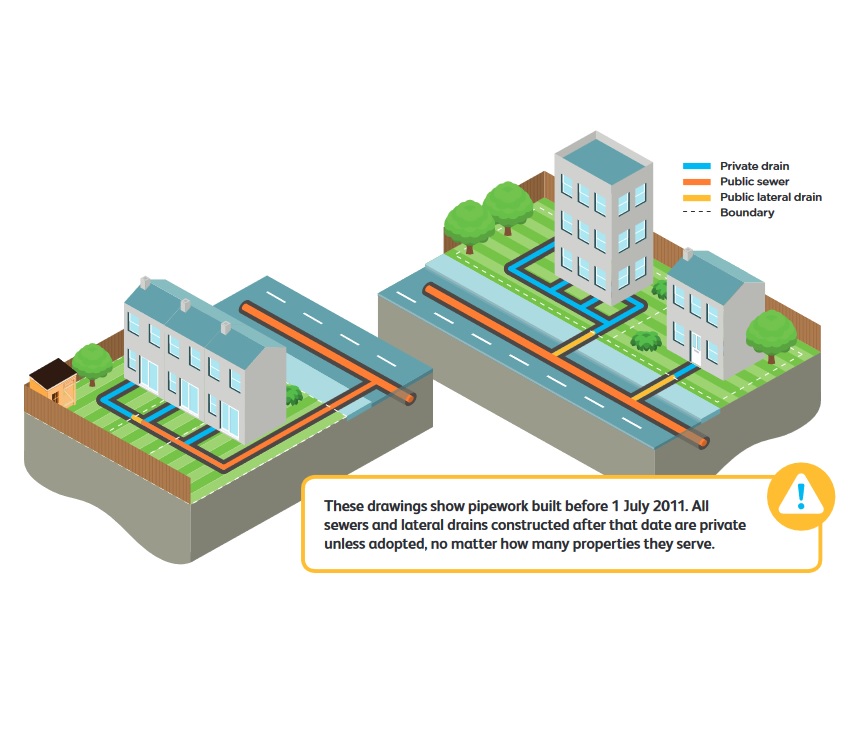Who is responsible for the drains?
As a homeowner, understanding who is responsible for the drainage system can be confusing. Thames Water has provided guidelines to help you understand who is responsible for what.
Firstly, the start of the drain is the responsibility of the property owner until it crosses the boundary into land owned by someone else. Once it crosses the boundary, it becomes a public lateral drain. This means that responsibility for any issues with the drain also transfers to Thames Water, the authority responsible for public lateral drains. Once a second property connects to the public lateral drain, it becomes a public sewer, which is wholly maintained by Thames Water.
Homeowners are only responsible for issues occurring on the private (blue) segments. This includes drains within their property boundary, connecting pipes from their property to the public sewer, and any internal plumbing.
If you are planning an extension, it’s essential to consider the location of public drains running across your property. Before beginning any work, you will need a CCTV Drainage Survey to determine the precise location of the drain and assess its condition. If the drain is in poor condition or needs to be moved, you will need a build-over agreement with Thames Water. This will confirm who is responsible for the drains and what measures need to be taken to protect them during construction. Sewers and lateral drains constructed after 1 July 2011 are private unless adopted, no matter how many properties they serve.
In summary, it’s crucial for homeowners to understand their responsibilities when it comes to drainage systems. While Thames Water is responsible for public lateral drains and sewers, homeowners are responsible for the private segments. If you are planning an extension or any other construction work that may impact the drainage system, be sure to consult with a professional to ensure that all necessary measures are taken to protect the drains and comply with regulations.

